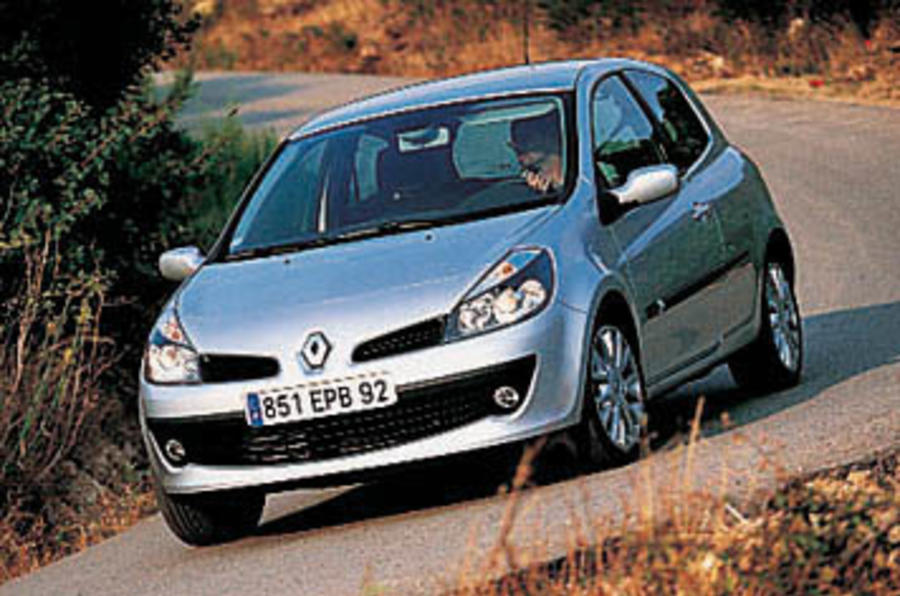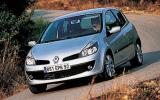Given that it’s still remarkably popular, there’s a heck of a lot that’s wrong about the current Renault Clio – or Clio 2, as Renault is inclined to call it for the moment. The interior is cramped and constructed from materials of questionable integrity. And the driving position is poor. And although the fast versions fulfil their dynamic brief, cooking models are not as comfortable or easy to drive as superminis should be.Step forward, then, a new Clio – Clio 3, naturally – seven years after the introduction of its predecessor. This latest version is, inevitably, bigger than before, more accommodating, easier to drive and built of considerably higher quality materials. No surprise there, then. What is surprising is just how much better the new Clio is; not just over the car it replaces, but over many of its contemporary rivals, too.Central to the new Clio’s confidence is its size – Fiat’s new Punto is the only supermini that’s bigger. The new Clio is 20cm longer than the old car, and only the same amount shorter than the Mégane. Nissan’s Micra, with which the Clio shares its ‘B’ platform, is almost 30cm shorter.So this is a big supermini; big enough for Renault to leave some versions of the current Clio on sale until 2007, in fact, by which time the company should have mustered a replacement for the Twingo to sit beneath it in the range.The new Clio’s increased exterior dimensions have naturally resulted in an increase in roominess. Front-seat accommodation is now excellent: the driver’s seat adjusts for height, there’s ample head- and shoulder-room and a wide footwell. The driving position itself is good, although the steering wheel will be too far away for many. Reach adjustment easily rectifies that, but to get it you must specify Renault’s hands-free Keycard option. That costs £250, however, and is only available on Dynamique models upwards. We think such basic ergonomic adjustment should come as standard these days.Rear accommodation has been greatly improved, too: two adults of up to six feet tall or so now have adequate head- and legroom. Three- and five-door versions are both equally capacious. The three-door arrives in the UK first, with five-door versions following in January.And the interior’s build is as impressive as the car’s new-found roominess. Soft-feel plastics adorn most surfaces and they’re coupled with brushed aluminium-look plastics and padded textiles. It’s arguably the best supermini interior of the moment in terms of appearance, fit and finish.The UK range will initially comprise six engines: three petrols (1.2, 1.4 and 1.6) and three diesels (all 1.5s, of 69, 84 and 104bhp). A Renaultsport version will follow. Most of our time at the car’s launch was spent in the 104bhp dCi diesel, which is Euro4-emissions compliant and quiet and smooth in its operation. It’s also noticeably peakier in its power delivery than the 85bhp version, developing all too little response below 2000rpm and becoming urgent shortly afterwards. You certainly need to work the six-speed gearbox to get the best out of it and remain in the small powerband.The 85bhp dCi’s delivers its power more progressively, which is why it makes do with a five-speed ’box. There will also be a 64bhp dCi which we didn’t get the opportunity to try; that model should only account for a couple of per cent of sales.Our pick of the petrols is the 1.4, which should also be the best-seller. It develops its 99bhp smoothly and has a linear throttle response. Ninety per cent of its 94lb ft of torque is developed from 2000rpm and, although that’s considerably less than the 104bhp dCi’s 177lb ft at the same revs, the petrol engine’s better response means that you can happily leave it in a high gear on inclines that would have you swapping cogs in the diesel. Of the other petrols, the 1.2-litre lacks the urge to haul the Clio with much vigour; the 1.6 is faster than the 1.4, but not by enough to justify its price premium.The petrol-powered Clios are dynamically better than the diesels, too. All models ride compliantly and corner reasonably, but the petrol versions are lighter and feel more alert, exerting less force onto their springs and dampers and thereby having better body control. The steering is electrically assisted on all Clios, but petrol models also feel more responsive: the steering on diesel versions is unsatisfyingly light, less accurate and non-linear.But overall the Clio’s a fairly decent drive. It’s certainly more compliant, quieter and considerably more comfortable than its predecessor. And let’s not forget, bigger and higher-quality, too. Job done, then? Not quite.Current Clio prices start at under £8000, but the cheapest Clio 3 costs £8895: a gap so large that the old Clio has to remain on sale. Only time will tell whether the gap beneath the new version in the Renault range will prove to be just that bit too big.Matt Prior
New Clio hits the spot at the premium end of the supermini market.
Close
Back to top


























Add your comment